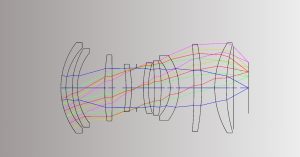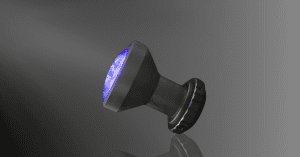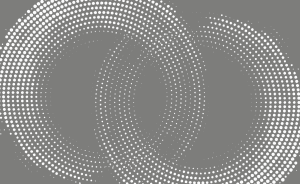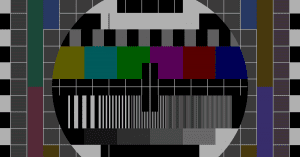Key Takeaways:
- An Ultra Wide Angle lens, with field views up to 160°, is crucial for capturing expansive scenes and intricate details.
- Their complex design includes negative front groups and positive back groups for deflection and correction.
- Aspherical lenses improve image quality and compactness, while digital correction addresses distortions.
- Wide-angle lenses are essential in photography, security surveillance, automotive systems, and aerial imaging.
Ultra Wide Angle Lens Overview
Key specifications include
- Field of View: Ranges from 80° to 120° for wide-angle lenses, over 120° for super-wide, and near or above 180° for fisheye lenses.
- Focal Length: Less than 38mm in traditional photography, and typically under 10mm in security applications.
- Wavelength: Covers visible wavelengths, with short-wave infrared for poor lighting conditions and night imaging.
- Chief Ray Angle: The alignment with the detector’s angle is crucial to maintain image quality and illumination.
- Distortion: Wide-angle lenses exhibit “Pincushion” distortion, often corrected digitally, enabling the broad application of ultra-wide and fisheye lenses.
Design of Ultra Wide Angle Lens
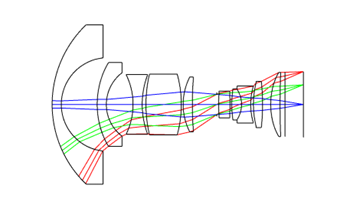
EFFL |
2.5mm |
F number |
3 |
Wavelength |
visible light |
Image height |
7.2mm |
Vertical FOV |
120° |
Diagonal FOV |
160° |
F-theta distortion |
<5% |
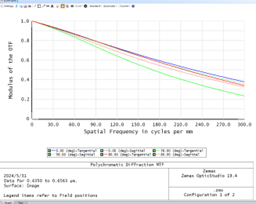
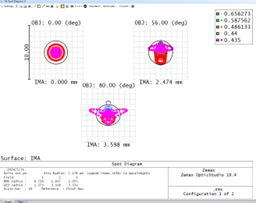
MTF&Spot

The object image relation is image height=f ‘θ, and the F-theta distortion is less than 5%.
A total of 10 pieces of glass are used in the design, including 8 pieces of spherical lens and 2 pieces of aspherical lens. The lens image quality is good. The use of aspherical surfaces can improve the image quality, simplify the structure, and help to compress the overall size. The overall size of this lens is small, with a length of 28mm, which is conducive to integration in actual use.
Versatility of Ultra Wide Angle Lenses
In conclusion, wide-angle lenses, with their short focal lengths and expansive fields of view, are indispensable tools in both traditional and modern imaging applications. They excel in capturing wide landscapes, intricate architectural details, and large vistas, making them essential for photographers. Furthermore, beyond photography, their utility extends to security surveillance, automotive systems, and aerial photography, where they enhance coverage, safety, and convenience. Moreover, the sophisticated design of wide-angle lenses, incorporating multiple glass elements and aspherical surfaces, ensures high image quality and compact form factors. The integration of advanced features like short-wave infrared compatibility and digital distortion correction further broadens their applicability. As demonstrated, by lenses with up to 160° field of view and meticulous design considerations to optimize image quality and minimize distortions, wide-angle lenses continue to evolve, meeting the diverse needs of various imaging disciplines.
At Avantier we can produce custom wide angle lenses in many configurations, including wide angle low distortion lenses with built-in correction. Contact us today to set up your initial consultation or to discuss your next project.
GREAT ARTICLE!
Share this article to gain insights from your connections!



